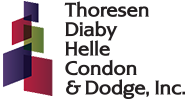
Under U.S. Generally Accepted Accounting Principles (GAAP), property, plant and equipment (PPE) assets aren’t immediately expensed. Instead, they’re capitalized on your company’s balance sheet and gradually depreciated over their useful lives. While that sounds easy enough, subtle nuances may trip up small businesses. Here are some tips to help get it right.
Capitalize the full cost
PPE is reported on the balance sheet at historical cost. You should capitalize all costs incurred during an asset’s construction or acquisition that can be directly traced to preparing the asset for service. Historical costs include the amount of cash or cash equivalents paid for an asset, as well as the expenses incurred to relocate the asset and bring it to working condition. Examples of capitalizable costs include:
- The purchase price,
- Sales tax,
- Shipping, and
- Installation costs.
Additionally, you must capitalize any costs incurred to replace PPE or enhance its productivity. However, you can expense repairs and maintenance costs as incurred.
GAAP doesn’t prescribe a dollar threshold for when to capitalize an asset. Instead, management can establish a capitalization threshold for efficiency, provided it doesn’t materially misstate the financial statements. Assets that fall below management’s threshold can be expensed immediately.
Determine the asset’s useful life
An asset’s useful life is the estimated period it contributes to your company’s operations and cash flow. To determine this, consider:
- The asset’s expected use,
- Any legal or contractual time constraints,
- The entity’s historical experience with similar assets, and
- Obsolescence or other economic factors.
Getting this estimate right is crucial. It affects your depreciation schedule — and your company’s reported profits.
What happens if a PPE asset is sold, damaged or otherwise impaired? Under GAAP, you must remove it from the balance sheet and recognize any resulting gain or loss on the income statement.
Select the right depreciation method
Depreciation is meant to allocate the cost of an asset (less any salvage value) over the period that it’s in use. Four common depreciation methods under GAAP are:
- Straight-line,
- Sum-of-the-years-digits,
- Units-of-production, and
- Declining-balance.
For simplicity, some small businesses deviate from GAAP by using the same depreciation method for tax and financial statement purposes. In this situation, the company would issue tax-basis financial statements that would disclose that they haven’t been prepared in accordance with GAAP. The IRS prescribes specific recovery periods for different categories of PPE and provides accelerated depreciation methods.
Under current tax law, instead of using the standard Modified Accelerated Cost Recovery System (MACRS) depreciation method, certain entities may choose to immediately deduct a qualified PPE purchase under Section 179 or the bonus depreciation program. This treatment minimizes taxable income in the years the asset is placed in service.
However, it may have some unintended consequences for financial reporting purposes. Using accelerated depreciation methods may create a large spread between the asset’s book value and fair market value. Assets contributing to future business operations may have no value on your balance sheet. First-year depreciation write-offs may also artificially reduce profits in the year of acquisition, making it hard to compare a company’s performance over time or against competitors. In years when your business makes significant PPE investments, these effects may raise red flags to lenders or investors.
We can help
PPE reporting involves judgment calls that can impact your financials and tax strategy. Our team can help you navigate these nuances, ensure compliance with the accounting rules and align your PPE strategy with broader financial goals.
© 2025
